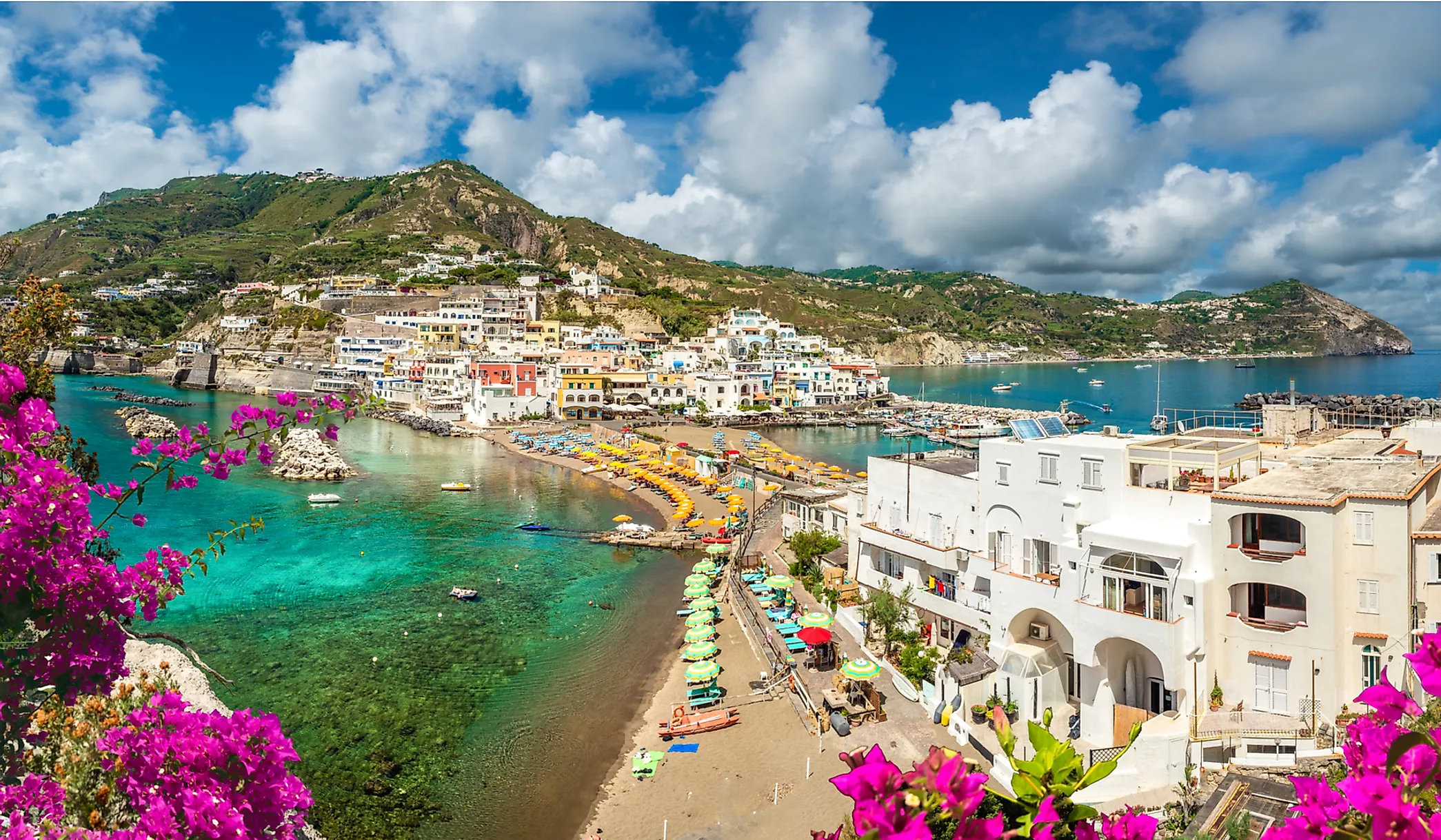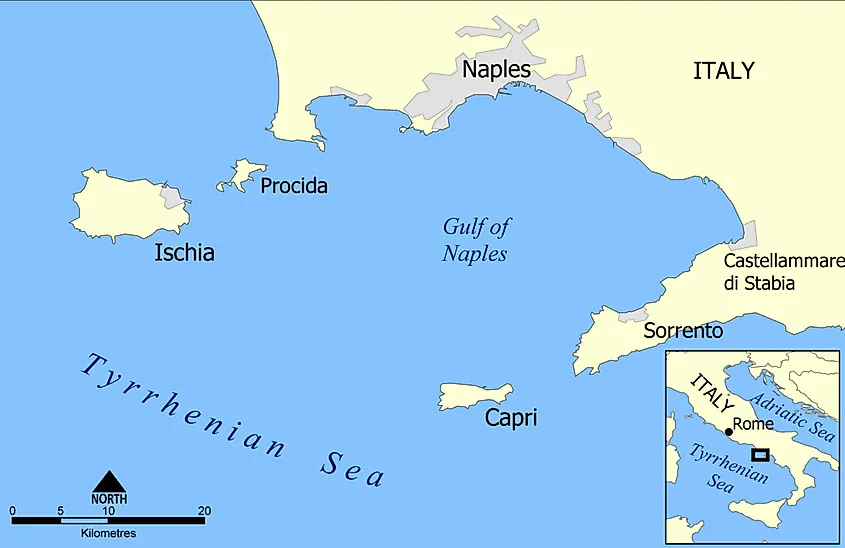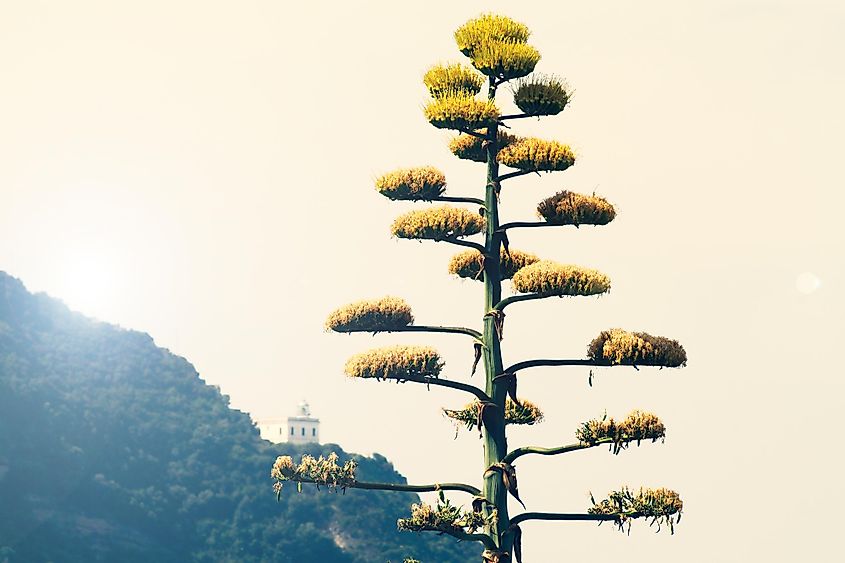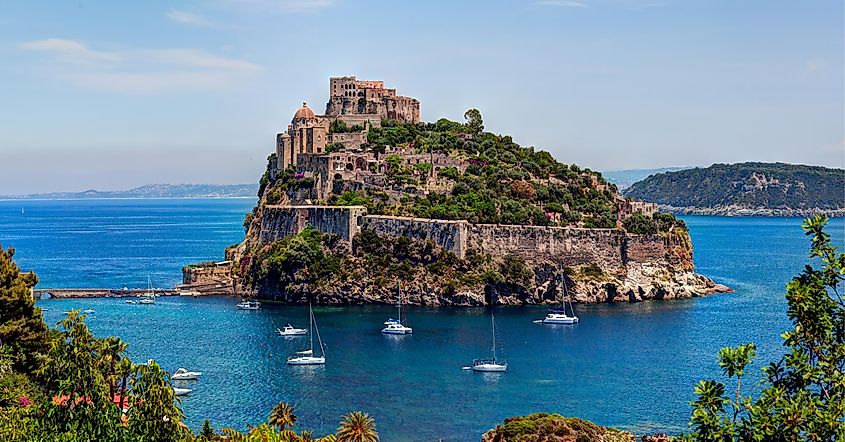
Ischia
The Island of Ischia is a mountainous volcanic island located about 30 km southwest of the Italian city of Naples, on the northern edge of the Gulf of Naples in the Tyrrhenian Sea. Covering an area of about 46.3 km2, Ischia is the largest among all the islands of the Phlegraean Island Archipelago in the Gulf of Naples. With approximately 60,000 residents, Ischia is the third-most populous Italian island after Sicily and Sardinia.
Geography

The mountainous Ischia Island has a roughly trapezoidal shape and measures about 7 km in length (from north to south) with a maximum width of 10 km (from east to west). The island is primarily composed of volcanic rocks with the extinct volcano Mount Epomeo in the heart of the island. Mount Epomeo rises to an elevation of 788 m and is the highest point on Ischia.
The principal commune on the island is also named Ischia. Some of the other communities on Ischia include Forio, Serrara Fontana, Lacco Ameno, Casamicciola Terme and Barano d’Ischia.
The Island of Ischia, due to its strategic location in the Gulf of Naples, experiences a Mediterranean climate with mild winters and hot, dry summers.
Wildlife

Ischia is mainly composed of fertile volcanic soil which supports the growth of several Mediterranean plants on the island. Trees like cypress, holm oak, cork tree, almond trees, olive trees, and vines are found on the island’s northern side. The southern side of the island favors the growth of agave, palms, and cactus plants.
The surrounding waters of the island along with the waters of the Gulf of Pozzuoli, Gulf of Gaeta, and the Gulf of Naples hosts numerous species of dolphins and whales including fin whales and sperm whales.
Brief History

The Euboean Greeks were the first to land on the island in the 8th century BCE and established the settlement of Pithecusae at the bay of San Montano. Hiero I of Syracuse in Sicily occupied Ischia along with the other surrounding islands and left a garrison to build a fort on the Island. The Aragonese Castle was built on a massive rock near Ischia Island in 474 BCE. The garrison, however, fled from the island after an eruption of Mount Epomeo, and the island was eventually taken over by the Neapolitans. The Romans conquered Ischia along with Naples in 322 BCE.
In 6 CE, the Roman Emperor Augustus Caesar handed over Ischia to Naples in exchange for Capri Island. In the following years, the island was subjected to frequent invasions by the barbarians, the Heruli, the Ostrogoths, and the Eastern Roman Empire. The island was returned to Naples in 588 by the Byzantines. However, once again the island came under a series of attacks by the Saracens, Henry II of Germany, Norman Roger II of Sicily, the Pisans, Hohenstaufen, Angevins, and the Aragons. Alfonso V of Aragon constructed a stone bridge to connect the Aragonese Castle with the mainland.
As a result of the eruption of Mount Epomeo in 1302, the island’s entire population fled to the ancient Roman town of Baia and settled there for four years. In the next few years, the island once again suffered heavily due to the ongoing wars between the Angevin and the Durazzo dynasties. The island witnessed a devastative earthquake in 1883, where the entire Casamicciola Terne and Lacco Ameno villages were destroyed.











